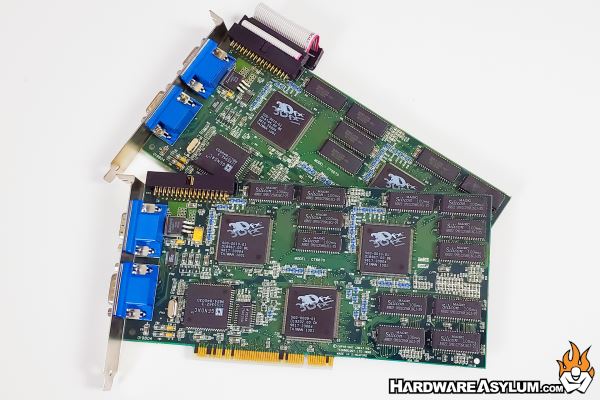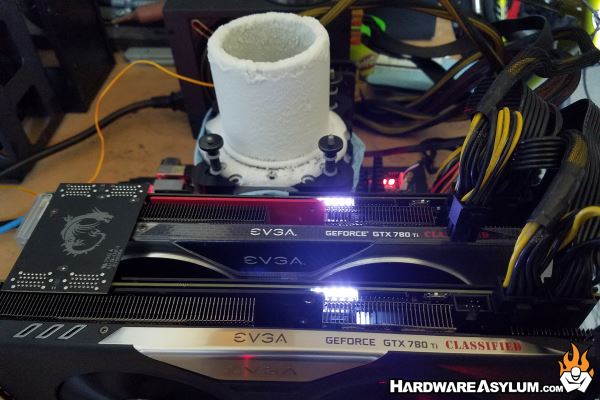You are Building Your PC Wrong
Author: Dennis GarciaMotherboards Evolve
As the computer hardware matured, so did our understanding of what “we” actually needed. AT based systems always had certain number of expansion cards installed so, hardware makers started integrating those features on the motherboard. This allowed for more expandability and, made their products stand out on the shelves. The ATX Motherboard not only expanded the physical size of the PCB but allowed for more I/O to accommodate just about anything you could imagine.
System expandability was still an important factor in early computers. Onboard audio options were available however the quality was never that good. There was also a dark time when Intel experimented with RDRAM (Rambus) memory which prompted users to delay their upgrades and simply replace the slower components with upgraded expansion cards. A good example of this was the Promise RAID adapter allowing you faster hard drive access combined with the performance benefit of RAID, or the linking of disks to double storage performance and create larger storage drives.
Expansion cards such as the 3DFx Voodoo video accelerators were also important additions to any gaming computer allowing users to massively increase video performance and visuals. If you wanted to push things a bit the 3Dfx SLI (Scan-Lin Interleave) increased speed and video resolution. By installing two or more Voodoo 2 adapters the workload was split across the cards lowering overhead and massively increased performance.

3dfx Voodoo 2 video accelerator used in conjunction with a standard graphics card to enhance games.
Expansion cards like this were extremely important to the modern PC as they extended the usable lifetime and created points of optimization. These also exemplified the reason for buying motherboards with plenty of expansion slots.
One of the major shifts in computer architecture is marked by the introduction of PCI Express. This is the current interconnect method and was created to address the performance limitations of legacy expansion options such as AGP, PCI and ISA.
PCI Express, much like the legacy PCI, allowed for two-way communication between the expansion card and processor sub-system using a modular interconnect based on “Lanes”. A full-length expansion slot was assigned a maximum of 16 Lanes (16x) of PCI Express bandwidth which could be divided down by factors of 4. Eg 16x – 8x – 4x – 1x.
With PCI Express we were also given one of the most significant contributions to the Enthusiast PC. This opportunity is the cornerstone for scaleable performance and was a building block for enabling modern AI.
Of course, at the time we called it NVIDIA SLI.

2x EVGA GTX 780 Ti Classified cards in SLI, System board is being overclocked by LN2 (Liquid Nitrogen)
Funny Story: During Computex 2004 I was meeting with my NVIDIA contacts to talk about PCI Express and the nForce3 chipset. The technology was extremely new and with their recent purchase of 3Dfx I was wondering if there were any plans to revisit a multi-GPU technology like SLI on the new platform. The idea was not unprecedented considering that, at the time, one of the only ways to have a dual monitor desktop was to install a secondary graphics card.
The room went silent, eyes across the room shifting from side to side and after a long pause my contact said.
“There is nothing in the spec that would prevent that from happening.”
At the time I was happy with that answer but didn’t think too much of it until… an article broke on TechReport.com announcing the launch of the NVIDIA SLI (Scalable Link Interface). This technology was similar to what 3Dfx had done but with a considerably more powerful software implementation and custom profiles for popular games.

4-way (4x) AMD Radeon HD 4850 Crossfire, System board being overclocked by a Single Stage Phase chiller.
NVIDIA SLI and AMD CrossFire (The AMD answer to SLI) were huge in the PC Enthusiast community. The technology would become a driving force behind specialized motherboard designs and unique video cards. Some motherboards supported 2-way SLI while other high-end boards supported up to 4-way SLI with special designs to enable four graphics cards to operate on a single system. This led users to start demanding full featured motherboards, lots of expansion slots and better onboard implementations of storage and audio.
This massive shift effectively choked out expansion card vendors and often forced Computer Hardware Enthusiasts to choose between multi-GPU builds or builds that might feature audiophile quality audio or faster storage.
Again, “It depends on what you plan to do”
USB was first introduced in 1996 and was a largely unused feature on early Pentium motherboards. This changed once official software support was enabled on Windows 95 OSR2 and has since become a common feature that everyone uses.
As USB speeds increased companies started to realize that we no longer needed an expansion card to add functionality to our computers. With the proper drivers they could unlock things such as laptop docking stations, external video cards, network adapters, video capture devices and digital audio. You name it; you can likely get a USB device to support it.

